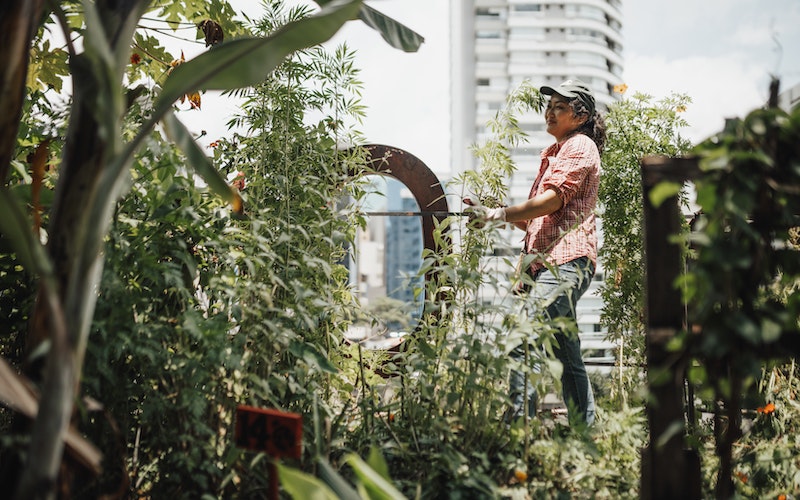My daughter-in-law has a small vegetable garden. In the beginning she had a lot of bugs. She knows what I do for a living, so she called me for advice. She was buying “baby plants” to give her garden a head start. I explained the benefits of growing from seed instead. Cuttings/clones often carry hitchhiking pests or pathogens.
She loves growing tomatoes and red peppers. Other favorites include carrots, red onions and herbs for seasoning and garnish. That being said, she still buys organic, locally grown vegetables at the store. Let’s cut to the chase: her home grown veggies do not cannibalize supermarket fruit, vegetables or herbs. After all, she can’t realistically synchronize all of the family’s meals to her garden’s timeline, and she isn’t necessarily growing every vegetable imaginable – she still needs to shop for zucchini and squash, for example.
Why the analogy? Well, it seems “Big Canna” and many dispensary owners believe legal Home Grow is taking market share away from them. This is not only incorrect but, hang on there a second buddy, your greed is showing…
In Canada, retail cannabis shops sell seeds and grow supplies. Their mindset is to get everyone interested in the plant and coming into their store. After all, if they purchase $100 in seeds, they just might purchase a grinder or other products. They might grow flower but will still come into shop for edibles, concentrates and other “manufactured” or otherwise-processed products. It’s win-win.
Visionary leaders understand that anything that gets people interested in a product (such as growing some themselves at home) and coming into their store (to get seeds and supplies) is a good thing. Build those relationships, and get the customers into the culture and coming into the store.
So, what’s the problem?
Well, if you run a web search you can actually find the answer. Even some legislators try to keep Home Grow out of state legalization efforts — medical or recreational. The reasons? One reason is basic: some say people grow it and therefore don’t buy it, hypothetically “robbing” (what a joke!) the state of found money (i.e., tax revenue). Others think it adds fuel to the fire that is the black market. It doesn’t, as there is no sale, but they still try to make this claim.
We’re not talking about the illicit market, we’re talking home grow — it’s for personal use, very often for medicinal use. Color me cynical, but I think these are all just thinly-veiled excuses to cover up the fact that Big Canna lobbies politicians hard to exclude home grow in new legislation, specifically to try to protect their turf as noted earlier.
Would it surprise you to know that it’s a felony—with jail time in some cases—if you get caught just growing plants in New Jersey, even though cannabis has been legalized there? Sad but true. A recreational dispensary-driven state where it’s legal to buy, sell and possess cannabis, yet you can be jailed for growing it. That’s absolutely absurd and makes no sense at all. Fortunately, certain legislators have figured this out and are working to correct this, although it’s still a problem as of this writing.
While NJ currently prohibits home grow, just across the river in New York you can now grow plants at home for personal use. New Yorkers 21 years and older can grow up to six plants in their home for personal use, with a maximum of twelve plants per household (6 mature plants and 6 immature plants), even if there are three or more adults over the age of 21 in the residence.

Note: The laws and penalties in the U.S. (state by state) are in sharp contrast to the entire country legalization approach—for instance, in Canada you can buy it at retail shops (seeds and grow supplies as well) anywhere and grow it at home. Wow, what a concept!
As of February 2023, 24 states plus the District of Columbia allow Home Grow. It’s simple: To decriminalize cannabis is to democratize the plant. Period. Buy it, grow it yourself—whatever.
According to research analysts, reasons why consumers grow cannabis at home for personal use ranges from cost to access and convenience. Additionally, many ailment specific strains are just not on the menu. Another factoid: Medical patients do their research and, in addition to finding the appropriate strain, many have serious concerns about contaminates — including but not limited to pesticides and mold.
About Access
State by state legislation really means city by city. Really.
California, where over 60% of voters legalized both retail and home grow is now referred to as a “Cannabis Desert” — why? At least 60% of the cities said NO to granting licenses (no shops in those cities). Most casual consumers outside of California will assume that if you live in Cali then you have dispensaries around. Not true. There are huge swaths of the state that opted out (that 60%). There are areas where there just isn’t a dispensary within several hours’ drive.
But Home Grow is legal state-wide in California. That means that growing 12 plants at home is legal in every city (that’s 100%). How bizarre is that? This “model” by the way is the same in every legal state. Now re-examine Big Canna’s statement that Home Grow impinges upon their sales. Oh really? In these 60% of communities where you can’t open a pot shop anyway?! But allowing Home Grow will let these patients grow the medicine they need, instead of going without.
In North America, Home Grow is legal in all of Canada and all of Mexico. In the U.S. cannabis laws are enacted state by state as outlined above. Mexico’s full legalization rollout is still in flux, but Home Growing is legal throughout the country.
So, where is it legal to grow cannabis in the U.S.?
About a dozen recreational / adult-use states allow unlicensed growing at home, while another dozen allow it under varied medicinal rules (i.e., you might need to get a medical card or a license to grow).
The states that allow home growing, in one form or another, are Washington D.C., Washington, Vermont, Rhode Island, Illinois, Oregon, Oklahoma, New Mexico, New Hampshire, Nevada, Maryland, Minnesota, Montana, Missouri, Michigan, Massachusetts, Maine, Hawaii, Colorado, California, Arizona, New York, Virginia, South Dakota, Utah, Alaska and Connecticut, which just passed legalization.
Note: The laws and penalties in the U.S. (state by state) are in sharp contrast to the entire country legalization approach—for instance, in Canada you can buy it at retail shops (seeds and grow supplies as well) anywhere and grow it at home. Wow, what a concept!
As of February 2023, 24 states plus the District of Columbia allow Home Grow. It’s simple: To decriminalize cannabis is to democratize the plant. Period. Buy it, grow it yourself—whatever.
According to research analysts, reasons why consumers grow cannabis at home for personal use ranges from cost to access and convenience. Additionally, many ailment specific strains are just not on the menu. Another factoid: Medical patients do their research and, in addition to finding the appropriate strain, many have serious concerns about contaminates — including but not limited to pesticides and mold.
About Access
State by state legislation really means city by city. Really.
California, where over 60% of voters legalized both retail and home grow is now referred to as a “Cannabis Desert” — why? At least 60% of the cities said NO to granting licenses (no shops in those cities). Most casual consumers outside of California will assume that if you live in Cali then you have dispensaries around. Not true. There are huge swaths of the state that opted out (that 60%). There are areas where there just isn’t a dispensary within several hours’ drive.
But Home Grow is legal state-wide in California. That means that growing 12 plants at home is legal in every city (that’s 100%). How bizarre is that? This “model” by the way is the same in every legal state. Now re-examine Big Canna’s statement that Home Grow impinges upon their sales. Oh really? In these 60% of communities where you can’t open a pot shop anyway?! But allowing Home Grow will let these patients grow the medicine they need, instead of going without.
In North America, Home Grow is legal in all of Canada and all of Mexico. In the U.S. cannabis laws are enacted state by state as outlined above. Mexico’s full legalization rollout is still in flux, but Home Growing is legal throughout the country.
So, where is it legal to grow cannabis in the U.S.?
About a dozen recreational / adult-use states allow unlicensed growing at home, while another dozen allow it under varied medicinal rules (i.e., you might need to get a medical card or a license to grow).
The states that allow home growing, in one form or another, are Washington D.C., Washington, Vermont, Rhode Island, Illinois, Oregon, Oklahoma, New Mexico, New Hampshire, Nevada, Maryland, Minnesota, Montana, Missouri, Michigan, Massachusetts, Maine, Hawaii, Colorado, California, Arizona, New York, Virginia, South Dakota, Utah, Alaska and Connecticut, which just passed legalization.
Author
-
Vincent Bitetti is the president and COO of Green Goddess Supply. The company is committed to democratizing the plant and making home grow easy and accessible to all. Vincent Bitetti is President and Chief Cannabis Officer at Green Goddess Supply and has invented The Armoire personal home grow system to empower anyone to grow at home quickly, easily, discreetly and inexpensively.








